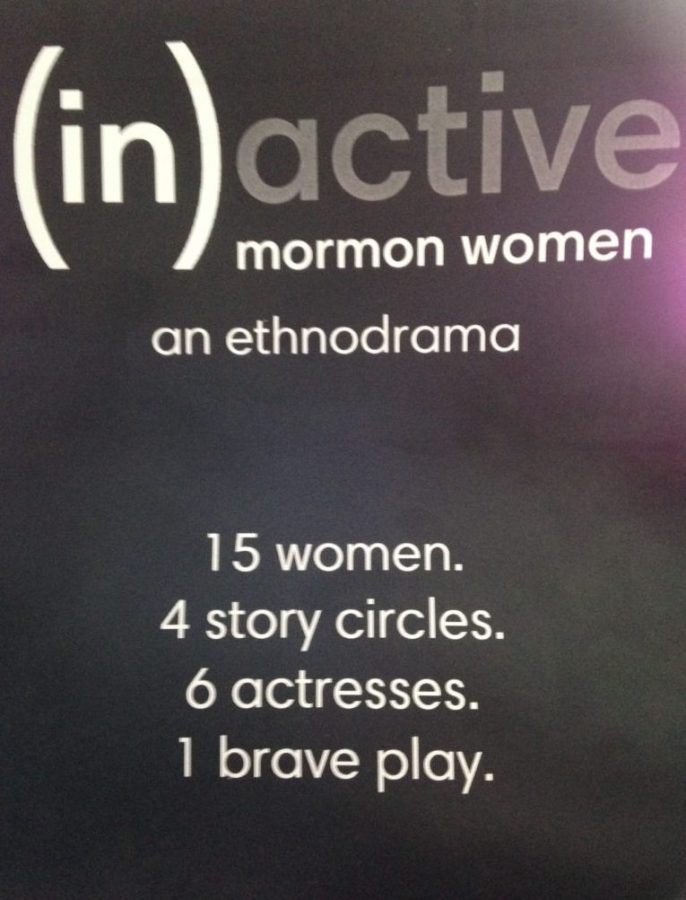Seven minutes after Salt Lake Acting Company’s doors opened on the evening of March 7, finding space for groups of even three to sit consecutively was next to impossible. Ten minutes after that, two extra rows had been added, with additional miscellaneous seats strewn throughout the room in any available corner. Clearly, something about this show — titled “(In)active Mormon Women: An Ethnodrama” — had already struck a chord.
Janice Jenson gave the introduction. She put the show together, she said, for her Westminster-earned Masters in Community Leadership capstone project, having been drawn to the theme through her own experience questioning and then leaving the LDS church. Fifteen women’s stories — from actual women Jenson spoke with in four story-circle-styled interviews — were compiled into six characters, each portrayed in this evening’s staged reading by actual inactive Mormon women, three community members, three professional actors.
After Jenson’s introduction, the lights dimmed, and the entrance door opened. The six performers — Chelsea Yeates (Lucinda), Emilie Starr (Presendia), Lily Hye Soo Dixon (Fanny), Marlena Everts (Sylvia), Marta Schaub (Agnes) and Natalie Keezer (Zina) filed in slowly. Each deposited a different LDS publication on stands set in a straight line in front of what looked like a comfy couch and chairs, bedecked in bright colors, backed by a blue bird cage topped with golden bird carvings.
The publications ranged from journals, to manuals, to children’s songbooks. During brief pauses throughout the staged reading, the six actors would take turns walking right up to the edge of the line demarcated by those publications, acting as if they were looking at something beyond them, as if maybe the line of publications were a cliff over which they were considering jumping, a theme that came up repeatedly in relation to the major shift that was leaving the LDS religion.
The rest of the time, these six woman read lines that felt like easy conversation between friends. Audience members easily became a part of their discussion, feeling as if they were in a comfortable living room somewhere, all discussing similar life experiences. This was particularly true for members of the audience who also identified as inactive Mormons, as they explained in a post-show talkback that took place immediately after the show.
Topics for the reading varied from challenges to modesty codes to admissions of sexual abuse at the hands of church members. LGBTQ+ identities were discussed, with one character being presented as explicitly lesbian. Trans struggles in Mormonism came up through one character’s story as a mother of a trans child. Everything felt real, familiar, relatable, and this was because it was all taken, word-for-word, from things actual inactive Mormon women had said. The show was thus made to feel personal and comforting at the same time that it was devastating and painful.
After a final shift to discussions on current spirituality outside the church, the six performers stood up once more, all together, and walked up to the edge of the publication line they had drawn at the beginning and skirted at regular intervals; and then, as one, in a move referred to throughout the show as jumping off the cliff of Mormonism into some unknown — they stepped over it. And the lights dimmed.
During the brief talkback, which was part of Jenson’s capstone work, most commenters expressed deep appreciation and relation to the performance, with a few requesting additional perspectives, and seemingly all hoping for some sort of final full production to come of it. Whether that does or doesn’t happen remains to be seen.












